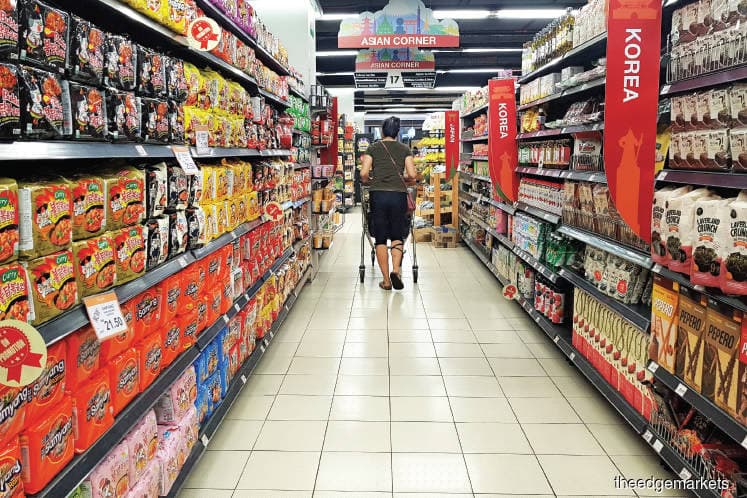Meanwhile, the CPI’s food and non-alcoholic beverages component has been consistent at 1.2% for the third consecutive month. Economists see the increase as fairly stable and it remains well below the five-year average of 3% and weaker than the average 1.6% rise over the past two years.
Lee points out that food prices are usually more stable than consumer durables during a recession. Companies are less likely to cut the prices of food compared with other durable goods such as clothing.
“Prepared food and food away from home are normally price sticky,” he observes, adding that the government’s assurance of a steady supply of food items also played a part in ensuring stable food prices, especially during the Movement Control Order (MCO) period.
“Following the reopening of the economy, most food items may not see strong increases in price levels despite an enhanced recovery in consumer demand compared with the MCO as the supply is stable and the prices of some goods were moderated by an oversupply or slack capacity.
“During the MCO period (March, April and May), 69.7% of food items recorded increases in prices, 27.3% price decreases and 3% no change in prices,” he notes.
One reason food prices were higher was because of Hari Raya in May, notes RHB Research economist Ahmad Nazmi Idrus, while the weaker ringgit against the US dollar may have also affected the cost of imported food.

Institute for Democracy and Economic Affairs research manager Lau Zheng Zhou says external trade policy movements and climate change will have a bigger bearing on food prices since Malaysia is a net importer of food.
In the coming months, economists agree that the price of crude oil is one factor that bears watching when it comes to the CPI.
Yeah notes that a relapse in the recovery of global crude oil prices will certainly exert further downward pressure on headline inflation.
“World crude oil price is still the wild card influencing the trajectory of headline CPI, especially its duration in negative territory that could be mistaken for the ‘economy in a deflation’ signal.
“Core CPI has inched marginally lower, reflecting weak consumer demand. With the MCO lifted, the recovery in consumption spending in the coming months is expected to shore up core CPI and further reduce deflation concerns,” he explains.
It is worth mentioning that deflation in an economy happens when there is a prolonged and broad-based decline in prices. Currently, what seems to be most affected is the CPI’s transport component, which has shown a decline for three months.
As inflation is expected to remain subdued in the upcoming months, will Bank Negara Malaysia cut rates further to spur the economy?
In the first few months of the year, the overnight policy rate (OPR) was already reduced by 100 basis points to 2%.
Most economists do not think further rate cuts are in the works.
Lau observes that both the central bank and the government have pursued expansionary policies in order to absorb the economic shock following the MCO. “Now that we have flattened the pandemic curve and gradually returned to normalcy, I think it is more prudent for policymakers to monitor the development further before making more cuts to the OPR,” he says.
RHB’s Nazmi is also not pricing in another rate cut. With the economy already on the road to recovery, he says, a cut will be seen as “behind the curve” and counter-intuitive.
Likewise, Lee opines that what Bank Negara will likely do is monitor economic conditions and the credit market, and provide additional support and appropriate financial measures if necessary. As such, it may not be confined to further rate cuts for now.
Bank Negara’s Monetary Policy Committee will be releasing a statement on July 7.
Save by subscribing to us for your print and/or digital copy.
P/S: The Edge is also available on Apple's AppStore and Androids' Google Play.



